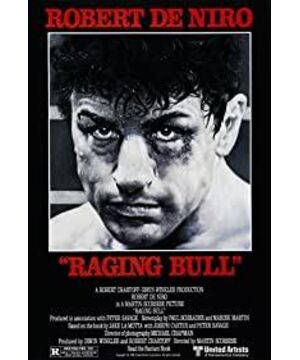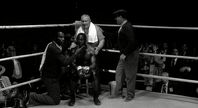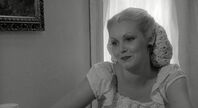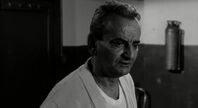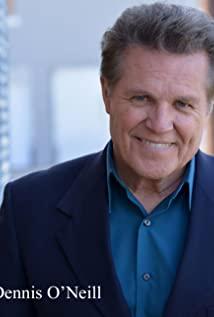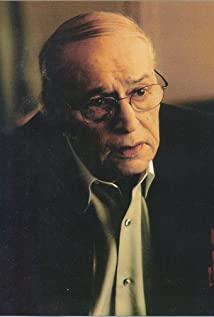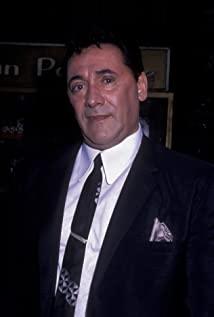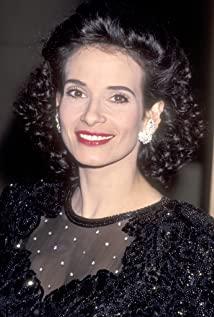Two topics of "Angry Bull" (1) Modern version of "Othello" About "Angry Bull" (hereinafter referred to as "Bull"), it started with such an anecdote-"Taxi Driver" was completed Later, Martin's drug addiction got deeper and deeper, and he had to go to the hospital to give up drugs. One day, De Niro came to see a friend, threw a book on the hospital bed before leaving, and said, "I think we should take this." This book is the former middleweight champion Jack LaMotta (Jack LaMotta) Biography. After reading it, Martin was very excited and thought it was a great story, so he invited Paul Schrader, who wrote the script of "Taxi Driver", as the screenwriter. Since La Mota was still alive at the time, Martin was worried that such a privacy-related film might provoke a lawsuit. It is unknown whether it will be released at that time. Therefore, the plan to film "Bull" was temporarily shelved, and Martin turned to Denis. Luo co-produced a magnificent but lacking highlight film "New York, New York". But during this period, the legend of La Motta has been lingering in Martin's mind. When "New York, New York" is completed, he is determined: "Regardless of whether it can be released or not, I must film it, even if it is for my own viewing. "He was quite satisfied with Paul Schrader's script, but in order to make the characters and the story fuller, he went to Martic. Martin (the two worked on "Poor Streets") further refined the script. As we know now, "Bull" not only helped Martin to get rid of drug addiction, but also gave him a new life. I have seen people in many places classify "Bull" under the name "sports movie" or "boxing movie", or think that those who classify movies don't understand movies at all. Just as "Citizen Kane" cannot be classified as a biographical film, "Bull" is neither a sports movie nor a boxing movie, and certainly not a La Mota biopic. Boxing is only the background of the film, and La Mota is the origin of the film. If you have to categorize it, you may wish to categorize it as a feature film. "Bull" tells the story of a man who is extremely insecure. He is suffering from jealousy and seeks redemption and punishment on the boxing ring. There is no mention of boxing tactics in the whole movie. It's not accidental, but deliberately by the choreographer-for La Motta, everything that happens on the ring, whether it wins or loses, depends on his own fear and impulse, and has nothing to do with boxing skills. La Motta’s wife Vicky said to his opponent "very handsome". Unexpectedly, La Motta was furious with jealousy and beat the guy's face into the boxing ring. At this time, there was someone in the audience. The boss said to his opponent: "He is not handsome anymore." After the KO opponent, La Motta turned his eyes to the wife under the ring at first glance-from the eyes of her husband, Vicky certainly understands something. mean. Martin's work is usually regarded as a man's film. The men under his lens often cannot trust women and cannot communicate with women. This is Martin's consistent theme, and La Motta in "Bull" is a testament to this theme. In the film, the fundamental driving force for La Motta is not the boxing on which he depends for survival and fame, but his strong possessiveness towards his wife Vicky and the fear of sex. When he first saw Vicky, he was fascinated by this indifferent and alienated blond beauty. At this time, Vicky was only fifteen years old, but she looked much older than her actual age (Kathy, who plays Vicky. Cathy Moriarty was nineteen years old at the time), and looked taller than La Mota. Although it is not directly shown in the film and there is no evidence that Vicky has an affair, a girl who has been with the gang since she was fifteen looks silly, but she knows everything about men and women well. You see when she first dated La Mota, her straight gaze was full of confidence, as if she could see through La Mota's clumsy behavior again and again. Some actors can be named in the history of shadows by virtue of a film (there are many examples), Cathy in this film. Moratti is one of them. The nineteen-year-old Moratti was able to play a woman with a misfortune into a lifeless marriage, which is really amazing. It's a pity that I have only watched the movie she starred in so far. La Motta has an ambivalence towards women. In his eyes, women were inaccessible saints before they were lost, and once they had a relationship with a man, they were defiled and became a prostitute that anyone could go to. This psychology was named by Freud as the "Madonna-whorecomplex" (Madonna-whorecomplex). Throughout the film, La Motta has been tortured by suspecting his wife for being unfaithful to him. Under his scrutiny, or in his fantasy, Vicky's words and deeds were not right, and everything changed. Although he never had evidence to prove that Vicky had derailed, he still beat her cruelly, as if he had grasped the handle of her infidelity. In La Mota's view, her own suspicion was sufficient to prove her guilt. The closest relationship in the film is the brotherhood between Jack LaMotta and his brother Joey. The role of Joey is Joe Pesci (Joe Pesci) who will win the Oscar in the future. He got this role purely by chance. At that time, Joe Pesci could not find a job in the show business. He decided to change his career. After seeing his performance in a B-level film, Joe Pesci invited the Italian fellow to audition and saved him. Joe Persie’s career (Joe Persie’s role in "Once Upon a Time in America" was also won by De Niro for him). In the film, Joe Persie's performance and De Niro can be said to mirror each other and are evenly matched. When the two started fighting, you came and went, and there was an almost crazy sense of rhythm. For example, Joey stunned Jack in a scene: "If you lose, you win; if you win, you still win." No matter you win or lose, you win." In another scene, Jack accused Joey of having an affair with Vicky while adjusting the TV antenna. Joey was so angry that he said, "Perhaps you don't know what you are talking about." Contacting the beginning of the film, Jack complained to his ex-wife that "the steak loses its meaning as it gets old". These conversations all reflect Martin, De Niro and Joe. Pessi's Italian background. The most commendable of this film is the boxing fight scene. Martin originally planned to spend more than ten days in shooting boxing, but in fact it took more than seventy days to shoot. He shoots in various ways he knows, and the large number of special effects inserted are enough to compare with the sensational "Star Wars" at the time. Just take sound as an example. The fighting in the film is cleverly mixed with the noise of the crowd, the howling of animals, the chirping of birds, the harsh blast of the flashlight (in fact, the sound of smashing glass), etc., although When actually watching a movie, we can't consciously distinguish these sounds, but we can feel them (the dts track is still there). Martin breaks the limitations of boxing movies and takes close-up shots on the boxing ring. Sometimes the camera is only a few centimeters away from the fist. He also randomly changes the size and shape of the ring to suit the needs of the shooting. Under his lens, the ring gives People feel claustrophobic and sometimes stretched unnaturally. Speaking of these fragmented but brilliant fighting scenes, one name I have to mention is Selma. Thelma Schoonmaker (Thelma Schoonmaker) edits thousands of feet of real-life film, then breaks it down into dozens of shots, and finally presents it as a heavy punch with no rules, only hatred and vent. It is this outstanding editor who allows us to see how this noisy and painful story is constructed with meticulous details. Undisputedly, Selma won the Oscar for Best Editing for this film. The bloody cruelty of the boxing fight scene in the film is also unprecedented. Compared with La Motta, Rocky played by Stallone is a little sheep. The thumping sound in the soundtrack makes the boxing fight even more shocking. The ring is soaked with blood and sweat. This is the blood and sweat made by Martin using the sponge hidden in the boxing gloves and the small tube hidden in the boxer’s hair. The gushing effect. According to Martin, part of the reason why "Bull" was made in black and white was to avoid the gore of color. More than twenty years later, Quentin shot "Kill Bill", and the fighting scenes in it were also partially rendered in black and white, and Quentin gave exactly the same reasons as Martin. The use of slow motion not only hints at where the character’s attention lies, but is also the most successful visual strategy for the film. In "Taxi Driver", there is a set of slow motion shots, showing Travis’s eyes of New York neighborhoods, as if time has stagnated at that moment; in "Bull", when La Motta stares at Vicky Martin also used slow motion, and the time around her seemed to slow down. We know that the conventional lens is 24 frames per second, but the slow motion shot by a high-speed camera has a lot more frames per second, so that the time required for projection is longer. Martin uses 30-36 frames per second, which is a very subtle speed. As the audience, we can completely internalize this sensory speed-when La Motta looks at Vicky with suspicion and burns in the fire At that time, we in front of the screen/screen also clearly felt his nervous eyes and growing anger. At the end of the film, the elderly Jack Lamotta thanked him for his blessing. In order to make a living, he read the script aloud, managed the night club, and even acted as the host of a strip club. Martin originally wanted to find a stand-in to film this segment, but De Niro proposed to suspend the filming and he wanted to fatten up and play it himself. In the end, he appeared on the screen with a big belly and his belt was tightly tucked under his belly. This kind of behavior that does not hesitate to harm health for the sake of truth not only makes the "methodist" to the extreme, it also really admires our generation. In the second half of the film, there is a passage describing La Mota being arrested and imprisoned. In desperation, he slammed the wall of the cell with his fist and screamed: "why! why! why! Fortunately, I thought of our ancient precepts, that there is no first and no second. Damn it, it's all good movies anyway, it doesn't make any sense to figure out who is better. Let's get back to business. But Jack LaMotta is an American tough guy who lives in the noisy Italian district of New York City—this is where Martin and De Niro grew up. These two brothers (born in 1942 and 1943, respectively) looked at them as children. La Mota is an idol and hero-La Mota has a kind of evil, a tendency to self-destruction, and most of this tendency comes from jealousy. In the film, after Travis Bickel ("Taxi Driver"), De Niro once again showed us that he was from Li. The "methodist" acting skills learned by Lee Strasberg (Lee Strasberg, the Jewish tycoon Rose in "The Godfather 2"), so La Motta's spirit once again possessed. There is a scene shortly after the beginning of the film. Jack and his younger brother Joey quarreled for an event, and then the two started each other. De Niro's performance was so cool. He hit Joey in the mouth with a fast and unpreparable speed. Joey also slapped him in the face with his fist. The scene immediately showed the relationship between the violent tendency of the boxer brothers and their lifestyle. Another scene is even more impressive. First, at the edge of the pool, Jack was attracted by a beautiful blond chick, so he asked Joey to match him up. Joey did so, and the chick-Vicky-also agreed. Next, Vicky got into Jack's car, and Jack pretended to stretch his hand behind Vicky naturally while driving. This meant that as long as the chick had a submissive movement, he would hold her arm around, but Vicky was motionless and had his eyes. The front was expressionless, maybe Jack felt that the first date shouldn't be too abrupt, it was a bit inappropriate to do so, so he stopped and withdrew his hand. Then the two came to a park to play poles(?), Vicky played but the ball was missing, Jack lay on the ground looking around... Finally, after going back and forth, Jack brought Vicky to his reservation. In the house that the brothers bought for his father, Jack opened the refrigerator and asked Vicky what he wanted to eat. Vicky said no, Jack closed the refrigerator, and the two sat down at a table, opposite Sitting, because there was nothing to say, Jack asked Vicky to sit closer, and Vicky sat on the side that was ninety degrees opposite him, and then remained silent. Jack motioned to Vicky to sit on his lap, and Vicky sat on his lap. , But he still didn't know what to say to her, so he took Vicky to the bedroom. Vicky followed obediently. The two sat on the bed. As soon as Jack put his hand behind Vicky, Vicky stood up and came to a In front of the cabinet, there was a picture of Jack and his brother. The bored Jack had to follow him. Standing behind Vicky, he first gave her a dry kiss from the side, and then kissed her again... The film fully showed the process of dating. , There must be more than ten minutes, the whole scene seemed very embarrassing, and there was not even a transitional and nasty word. I didn’t understand why this scene was filmed so long and detailed, but now I understand a little bit. This is Martin's use of this dating scene to show the audience the character of Jack and Vicky. It is to pave the way for the next scene-Jack She's a boxer, she was originally a rough person, and he wouldn't say a word about the active atmosphere. On the other hand, Vicky, although she is very confident in front of Jack, it is just the kind of confidence that comes from a beautiful girl from the bottom of society. When forcing her, The kind of resignation she showed made me a little touched. In a word, this dating scene shows the character of a boxer and a girl from the lower class extremely fully. This scene is so different that it makes people feel that this is not a movie, but a reality, it is life itself. What must be said is the title of the film. I couldn't find the right words to describe the opening of "Bull" for a while, I can only say it-it's so cool! Jack La Motta in the cloak was warming up before the match. The audience could be seen vaguely from the stage. On the face of him, there were three very thick ropes on the ring, which surrounded La Mota. The action of the tower was shot in slow motion, and accompanied by the soothing interlude of Mascari's "Country Knight", it presents an extremely beautiful and dynamic picture. Therefore, this beginning seems to have a clear metaphor: La Motta was like a beast in a cage surrounded by onlookers. He roared and shook his fists in all directions, but to no avail. If there is a grandstanding and false violent beauty in Wu Yusen's movies, then Martin's movies are the false antithesis. I don't remember how many times I have watched this movie, but it must be more than ten times. This time, I focused my attention on the details of each lens. I found that Martin handled these details cleanly and in place, through the camera's speed change, the combination of motion and music, including the "Papa Papa" fried bean-like. The white light and sound effects of the bright spotlight directly stimulate the senses of the audience. For sports shooting, Martin's research and experiments are really admirable. Needless to say, editing, or that "good movies are all cut", this sentence can only be established for a few movies (such as Orson Wells "Gone with the Tribulation", that is another story), " Many of the images in "Bull" are skip cuts, but the results obtained are far more satisfying than natural cuts. After the release of "Bull", any director who wants to shoot sports and competitive scenes, it is difficult not to refer to this movie, especially the relative movement of the camera and the characters, the sudden close-ups, and the relationship between the characters and the space-seemingly chaotic. In fact, it is a carefully constructed and appropriate composition, the use of lighting, and the exaggerated but vividly achieved amazing visual effects...This kind of kung fu, even if the director who specializes in action movies is not surprisingly sensitive to the lens, Or have good patience when shooting on the spot, it is impossible to shoot. After watching this movie for the Nth time, I concluded that Martin. Scorsese is an inimitable director. You can learn a few tricks from his movies that seem to be very handsome and cool. It’s easy to do, but it’s useless. The reason why Martin is repeatedly mentioned, quoted, and worshipped is because of his movies. It is the product of his spirit or temperament, because his own way of seeing the world is different, his understanding of people and things are also different. His films are full and rich in content, passionate and calm and restrained, and his attention to detail is unmatched among contemporary directors. In summary, his film technique is essentially impossible to learn and imitate. So far, I think I should watch "Bull" again, at least I can remember some beautiful mirror shots, and appreciate the relationship between those mirror shots and the characters and the plot. Although this has nothing to do with my personal life, Martin's movies are really popular and endearing. There is nothing to say. 2019-10-25 PS. There are many movies with boxing as the theme, so that "boxing movies" have almost become a sub-genre in the movie classification, most of which have the color of inspirational movies, such as the "Rocky" series starring Stallone , Such as Russell Crowe's "Tekken Man" and so on. But I think there are at least four boxing/boxer-themed movies that cannot be classified into this genre. Except for this "Angry Bull", the other three are Eastwood's "Million Dollar Baby" and Big Guardian O. Russell's "Warrior" and Gavin O'Connor's "Warrior". In these movies, boxing or boxer is only the background of the movie, not the theme of the movie. Therefore, they are all feature films. Crowe's "Tekken Man" and so on. But I think there are at least four boxing/boxer-themed movies that cannot be classified into this genre. Except for this "Angry Bull", the other three are Eastwood's "Million Dollar Baby" and Big Guardian O. Russell's "Warrior" and Gavin O'Connor's "Warrior". In these movies, boxing or boxer is only the background of the movie, not the theme of the movie. Therefore, they are all feature films. Crowe's "Tekken Man" and so on. But I think there are at least four boxing/boxer-themed movies that cannot be classified into this genre. Except for this "Angry Bull", the other three are Eastwood's "Million Dollar Baby" and Big Guardian O. Russell's "Warrior" and Gavin O'Connor's "Warrior". In these movies, boxing or boxer is only the background of the movie, not the theme of the movie. Therefore, they are all feature films.
View more about Raging Bull reviews


